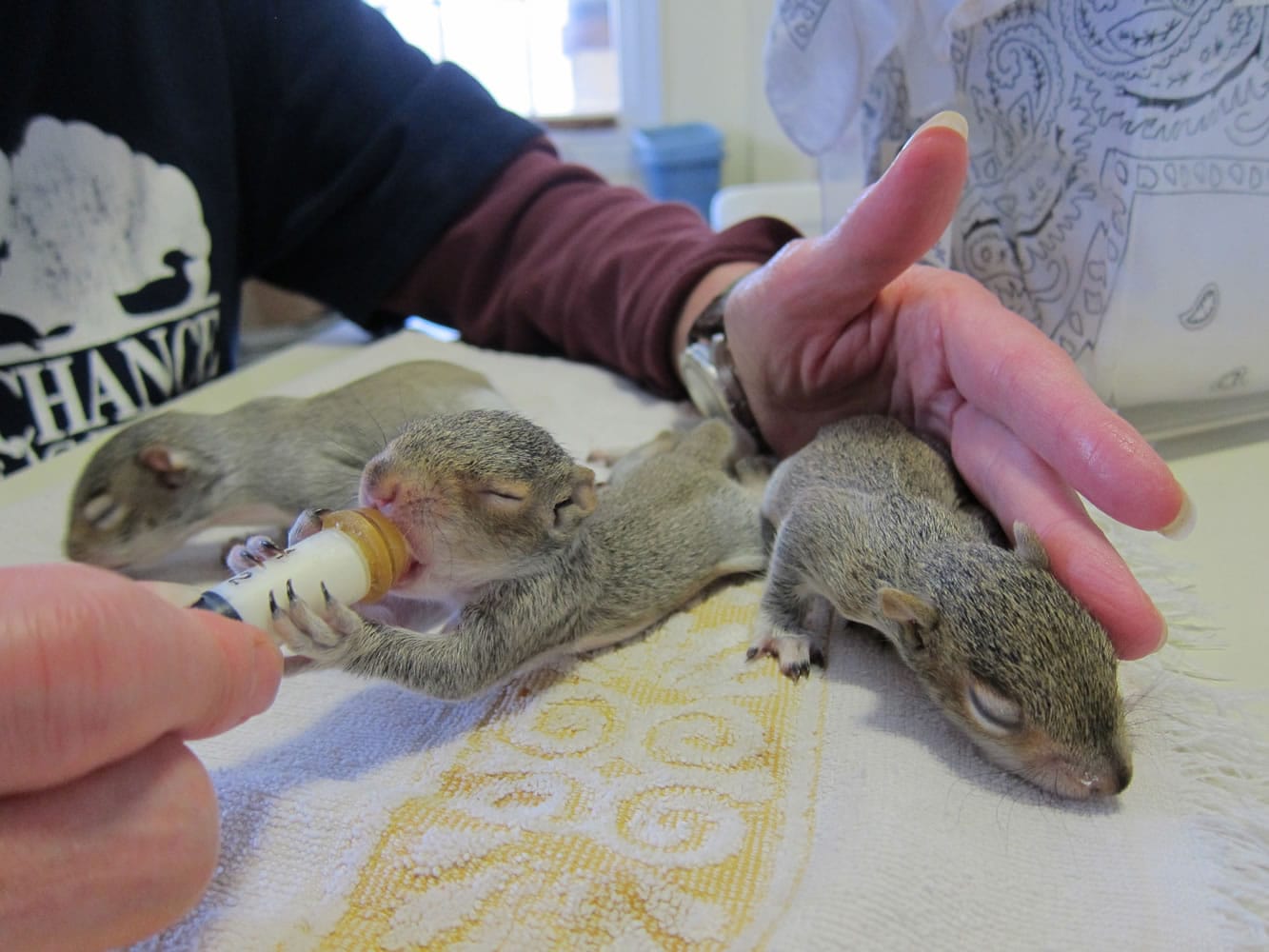A squirrel does not open its eyes till it’s about 5 weeks old, meaning that many of the babies being cared for at Second Chance Wildlife Center in Gaithersburg, Md., are sightless.
Eventually, though, the day arrives when the squirrels finally take a look at the world around them. “They have the most surprised look when they open their eyes,” says Polly Hoffman, the center’s clinic supervisor, “like, ‘That’s what’s been feeding me?’ “
Yep, that’s what’s been feeding you: humans.
The spring baby squirrel season is well underway for wildlife rehabilitators. The first babies came to Second Chance in mid-February: a pair discovered in the engine block of a car stored in Rockville, Md. Two weeks later, someone in Gaithersburg found a pair of baby squirrels while cleaning his gutters.
The count will grow, augmented by pet owners who rescued baby squirrels from the clutches of cats or dogs, by tree companies that have chopped down oaks, by homeowners who watched something plummet from a branch …
Falling from a nest usually isn’t too harmful. “Baby squirrels bounce pretty well,” says clinic technician Brittany Davis. “There’s usually very little internal damage.”
The center gets about 100 babies each spring and an additional 400 or so in the fall breeding season. The human caretakers are well-versed in orphan squirrel care. On a recent afternoon at the center, Hoffman has two jars of formula warming in a bath of water at a table, a selection of syringes and nipples nearby.
Squirrels can’t digest cow’s milk, so the rehabilitators use a special formula designed with the proper fat content for the age of the squirrel.
Hoffman reaches into a plastic box that’s lined with a bit of fabric and pulls out a baby. It already has fur – and quite impressive claws – but its eyes are closed. Still, it has no problem grabbing the syringe, finding the nipple and nursing energetically.
When they’re little, the squirrels are fed every four hours or so. “They fall asleep right after they’ve been fed,” Hoffman says. And sure enough, the first squirrel starts dozing the second Hoffman puts it down and reaches for the next one.
In the wild, squirrels are kicked out of the nest at 16 to 18 weeks old. Second Chance will keep these babies until they’re 18 or 19 weeks.
“We can’t speak squirrel, so we keep them longer,” Davis says. Once off formula, they switch the squirrels to a solid rodent chow – and from a box to a cage. Then the squirrels are moved to larger outdoor enclosures equipped with nest boxes. Contact with humans is minimized.
When the squirrels are observed burying nuts in the mulch of their cages, they’re ready to go home. Their nest boxes are sealed with them inside, taken to a location miles away and unsealed. Then the squirrels are on their own.
Davis has been a licensed wildlife rehabilitator since 2004. (It’s the people who are licensed, not the centers.) She studied biology in college and is Second Chance’s resident squirrel expert.
“I have a love-hate relationship with squirrels,” she jokes. “I hate how much I love them.”
Still, she maintains the rigor that’s required of her job. “I’m the biggest bunny hugger ever,” she says. “I would love to bury my face in all the fur and the feathers. But I save the cuddling for my own personal pets.”
Kissing and hugging the squirrels is “a big no-no,” Davis says. “We try not to anthropomorphize. We do know the natural history.” They know that squirrels are wild animals, not interested in cuddling.
I apologize before asking Davis a question I feel I must ask: Given that many people think squirrels are pests, why should anyone be expending such resources to save them?
“Why does anybody’s life need to be saved?” Davis asks. “It’s a life, it’s valuable.”
Davis is honest about the impact she and her fellow rehabilitators have: “If every single animal that came into our center didn’t make it, the outside population wouldn’t be affected.”
Then she makes an interesting point: “Our service is a lot more for the people. We invest so much emotion into everything we do. It’s hard to watch nature take its course, to watch a baby sit there and die slowly of starvation. … We think our hearts are in the right place.”
Not to anthropomorphize the squirrels, but I bet they agree.



